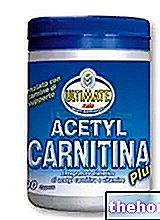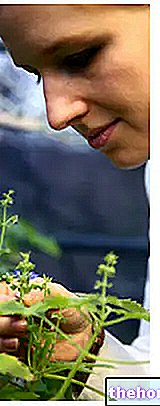
Very abundant in human colostrum or first milk, lactoferrin circulates in the organism mainly in the blood plasma.
It is a key part of neutrophil white blood cells, but is believed to be produced by other cells as well.
In body fluids, lactoferrin is found in three chemical forms: iron-free, monoferrin, and differential.
Three isoforms of lactoferrin are known, two with RNase activity (lactoferrin-beta and lactoferrin-gamma) and one without RNase activity (lactoferrin-alpha).
Lactoferrin receptors can be found on intestinal tissue, monocytes / macrophages, neutrophils, lymphocytes, platelets and some bacteria.
A broad spectrum of biological functions is recognized to lactoferrin, ranging from controlling the availability of iron to immune modulation (antimicrobial, antiviral, antifungal, antioxidant, etc.).
However, more research is needed to gain clarity on the exact mechanisms of action of lactoferrin.
: 0.02-1.5 µg / ml;
In particular, according to an old study entitled "RNase inhibition of reverse transcriptase activity in human milk"By destroying the RNA genome, milk RNase inhibits the reverse transcription of breast cancer-causing retroviruses (seen primarily in mice).
It is no coincidence that Parsi women in Western India, having a much lower level of RNase in milk than other groups, show breast cancer rates three times higher than the average (Human milk samples from different ethnic groups contain RNase that inhibits, and plasma membrane that stimulates, reverse transcription).
Therefore, milk ribonucleases, and in particular lactoferrin, could play an important role in the pathogenesis mechanism mentioned above.
Lactoferrin receptor
The lactoferrin receptor plays an important role in its uptake and facilitates its binding with iron ions.
Gene expression of this receptor has been shown to increase with age in the intestinal tract of the duodenum and decrease in the fast.
Also there glyceraldehyde-3-phosphate dehydrogenase (GAPDH) - glycolytic enzyme - has been shown to function as a receptor for lactoferrin.
Bone activity
To examine how lactoferrin can affect bones, it was used in a form enriched with ribonuclease.
It has thus been shown to have positive effects on bone turnover, helping to decrease mineral resorption and increase deposition. This was demonstrated by a decrease in the levels of two bone resorption markers (deoxypyridinoline And N-telopeptide) and an increase in the levels of two markers of bone formation (osteocalcin And alkaline phosphatase) - study: Milk ribonuclease-enriched lactoferrin induces positive effects on bone turnover markers in postmenopausal women.
It also reduced osteoclast formation, which indicates a decrease in pro-inflammatory responses and an increase in anti-inflammatory responses, translating to reduced bone resorption (Inflammatory responses improve with milk ribonuclease-enriched lactoferrin supplementation in postmenopausal women).
Interaction with nucleic acids
One of the important properties of lactoferrin is its ability to bind with nucleic acids.
The fraction of this protein extracted from milk contains 3.3% RNA, although it binds preferably to double-stranded DNA rather than single-stranded DNA.
The ability of lactoferrin to bind DNA is exploited for its isolation and purification by affinity chromatography.
, like tears and saliva.More abundant in colostrum than transition and maintenance milk, lactoferrin is also typical of neutrophil granulocytes, immune cells with defense functions against bacterial and fungal infections.
The antimicrobial properties of lactoferrin are mainly due to the ability to bind iron, removing it from the metabolism of those bacterial species - such as"Escherichia coli - which depend on it for their own multiplication and adhesion to the intestinal mucosa (bacteriostatic effect); it also has a direct antibacterial (bactericidal) action, thanks to the ability to damage the outermost layers of the cell membrane (LPS) of some GRAM negative bacterial species.
It is therefore no coincidence that lactoferrin is also used by the food industry to treat beef carcasses and protect them from surface bacterial contamination.
Similarly, it is not accidental that lactoferrin concentrates at the level of many mucous membranes, which by definition are those layers of cells that cover the internal surface of the organism's cavities and canals communicating with the outside, and as such exposed. to attacks by pathogens.
The antiviral effect of lactoferrin is related to its ability to bind to plasma membrane glycosaminoglycans, preventing the virus from entering and stopping the infection in the bud; this mechanism appeared effective against Herpes Simplex, cytomegaloviruses, and HIV. .
Lactoferrin is also shown to be effective in the fight against certain mycoses - for example, Candida.
There is also evidence of a possible role of lactoferrin as an antitumor agent, demonstrated on numerous occasions on chemically induced tumors in laboratory rats.
The ability of lactoferrin to bind the ferric ion (Fe3 +) is twice higher than transferrin, the main plasma protein responsible for transporting iron in the bloodstream (both are part of the same family of proteins - called transferrins - capable of binding and transferring ions Fe3 +).
Each lactoferrin molecule can bind two ferric ions to itself and based on this saturation it can exist in three distinct forms: apolactoferrin (iron-free), monoferrin lactoferrin (linked to a single ferric ion) and ololactoferrin (which binds two ions to itself ferrici). The activity of the protein is also maintained in acidic environments and in the presence of proteolytic enzymes, including those secreted by microorganisms.
As anticipated, the first milk that a woman produces after childbirth, colostrum, is particularly rich in lactoferrin, which favors the development of beneficial intestinal bacteria, helping the baby to eradicate the pathogens responsible for gastroenteritis (colic of the newborn).
As the days go by, the quantity of lactoferrin decreases, in parallel with the development of the baby's immune defenses. This is why lactoferrin concentrations in cow's milk are quite variable (cows are milked very long after the calf is born).
Lactoferrin for the baby
In children, lactoferrin is also an "important source of iron and facilitates its absorption".
Iron is the only mineral present in breast milk in lower quantities than the infant's needs; this deficit is however filled by the stocks accumulated during fetal life (breast milk is undoubtedly the most recommendable food for the newborn, as provides all the nutrients but above all contains them in the right proportions).
The ability of lactoferrin to bind iron also suggests its possible role as an antioxidant agent. By sequestrating the excess iron, it prevents it from producing the well-known pro-oxidant effects (Fe2 + + H2O2 → Fe3 + + OH · + OH−).
Recent studies have ascribed to lactoferrin promoting properties on the activity of osteoblasts and chondrocytes, cells respectively responsible for the production of bone and cartilage tissue.
Laboratory diagnostics
In diagnostics, lactoferrin concentrations in faeces can be evaluated to look for the presence of inflammatory bowel diseases, such as Crohn's disease and ulcerative colitis. These pathologies, in fact, are typically accompanied by an increase in fecal lactoferrin.
, lactoferrin can on the one hand increase the susceptibility of bacteria to drug therapies and on the other hand, in synergy with probiotics, promote the growth of beneficial intestinal bacterial strains (Lactobacillus or Bifidobacterium) which depend less on the availability of iron. Obviously a similar therapeutic strategy can be adopted only and exclusively after specific medical advice.In supplements, lactoferrin is generally present together with substances with synergistic action, such as probiotic and FOS strains.
For further information: Lactoferrin supplementsAttention! In the presence of particular conditions (for example, particular allergies, pregnancy and breastfeeding, etc.), as well as in the presence of particular disorders or diseases and in the case of pharmacological therapies in place, before resorting to the use of multivitamin supplements, it is advisable ask your doctor for advice.
















.jpg)











